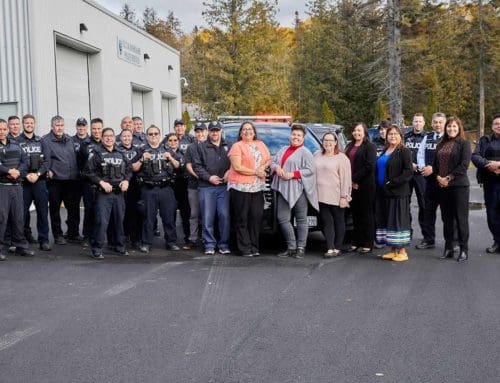Violent Threat Risk Assessments were born out of necessity resulting from mass school shootings in Canada and other places around the world. Initially, these assessments were started through the school system. Today, they have evolved to be more community oriented.
The assessments allow professionals in Human Services to collaboratively address threats and threat makers as well as continue to work with them to reduce further risk from occurring.
Beginning in March 2018, the UCCM Anishnaabe Police were participating in a review of violence related occurrences and discussing options to proactively address these types of issues at a community level. On March 29, 2018, a contract was secured with the Canadian Centre for Threat Assessment and Trauma Response to facilitate levels one and two of Violence Threat Risk Assessment (VTRA) training. A call was put out to the partners within Maamwi Naadamadaa. On June 12 and 13, 2018, we had 41 people trained for level one and 39 people trained up to level two.
This work emphasizes a multidisciplinary approach that considers the uniqueness and diversity of the rural First Nations in our area. A multidisciplinary team affords a more complete understanding of the dynamics involved in the lives of those individuals making the threats and presenting the risks. This approach also better reflects consideration of the contexts in which threats occur and the impact upon those identified. The strength of the multidisciplinary team is the access it provides to a broad range of expertise and perspective. VTRA assessments complement and enhance Gchi Mino Naadmaadwin Teg.
We provide collaborative planning among children/youth, families, schools and community agencies to reduce violence and to reflect safe, caring and restorative approaches. It fosters timely sharing of information about those who pose a risk for violence towards themselves or others while respecting an individual’s right to privacy to the fullest extent possible. Finally, the protocol promotes supportive interventions and preventative plans being put into place.





